 |
 |

 |
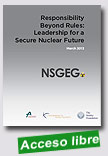 |
Responsibility Beyond Rules: Leadership for a Secure Nuclear Future
Nuclear Security Governance Experts Group (NSGEG), March 2013, 33 p.
The current nuclear security regime is not robust, adaptable, or coherent enough to adequately protect against the intensifying and evolving threats posed by nuclear terrorism in the 21st century. The governance system for nuclear security is in need of significant improvement in three areas: greater coherence and confirmed effectiveness, enhanced transparency, and increased |
international confidence, including through shared assessments of performance and cooperation. The current nuclear security regime has improved over time, but this evolution has been too slow and is incomplete. It relies primarily on opaque national structures and voluntary commitments to prevent nuclear and radiological terrorism. While there are a limited number of binding international agreements covering aspects of nuclear security, adherence to them is incomplete, assessing compliance is difficult, and they leave significant gaps in the system.
The Nuclear Security Summit (NSS) process raised the profile of nuclear security and initiated a dialogue among more than 50 heads of state and international organizations. However, the primary focus of the first two summits in Washington (2010) and Seoul (2012) was on effective implementation of the current regime, rather than identifying and addressing its shortcomings and building a sustainable global regime for the future. The third summit, taking place in the Netherlands in 2014, offers leaders an opportunity to demonstrate global leadership and responsibility beyond today’s rules and regulations by endorsing improvements to the international nuclear security system that emphasize confirmed performance and accountability. The governance structures of the current regime cannot be reformed overnight, but the process must be initiated by 2014.
This document details five steps and 30 recommendations for significantly strengthening the global nuclear security regime and creating the foundation for its long-term effectiveness and adaptability. These steps and the recommendations result from three international workshops held by the Nuclear Security Governance Experts Group (NSGEG) in 2012. The goal is to enable substantial nuclear security regime improvements by 2020.
Site com vídeo
Extraído de: http://www.nsgeg.org/recommendations.cfm
|
 |
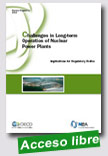 |
Challenges in Long-term Operation of Nuclear Power Plants - Implications for Regulatory Bodies
Nuclear Energy Agency (NEA), 2012, 34 p.
Nuclear power reactors have become a major source of electricity supply in many countries and, based on the experience of safe and reliable operation, many operators have sought and received authorisation for long-term operation beyond the period assumed in the plant’s design. Acceptance of a nuclear power plant for long-term operation must be based on evidence that the plant will operate safely over the extended
|
period of service. This requires an assessment of the current and projected condition of the plant and, in particular, of the systems that perform fundamental safety functions, to ensure that these systems will continue to perform their safety functions during the extended operating period. Programmes for long-term operation must be informed by operating experience and must also consider and assess environmental impacts.
This guidance document is intended to assist regulatory organisations in assessing and approving the long-term operation safety assessments submitted by operators. It outlines the fundamental principles that should govern decisions on authorisation for long-term operation. It also describes regulatory challenges and considerations that may arise in an assessment of a plant for long-term operation.
Extraído de:
http://www.oecd-nea.org/
|
 |
 |
NMain Benefits from 30 Years of Joint Projects in Nuclear Safety
Nuclear Energy Agency (NEA), 05/04/12, 132 p.
One of the major achievements of the OECD Nuclear Energy Agency (NEA) is the knowledge it has helped to generate through the organisation of joint international research projects. Such projects, primarily in the areas of nuclear safety and radioactive waste management, enable interested countries, on a cost-sharing basis, to pursue research or the sharing of data with respect to particular areas or issues. Over the years, more |
than 30 joint projects have been conducted with wide participation of member countries.
The purpose of this report is to describe the achievements of the OECD/NEA joint projects on nuclear safety research that have been carried out over the past three decades, with a particular focus on thermal-hydraulics, fuel behaviour and severe accidents. It shows that the resolution of specific safety issues in these areas has greatly benefited from the joint projects’ activities and results. It also highlights the added value of international co-operation for maintaining unique experimental infrastructure, preserving skills and generating new knowledge.
Extraído de: http://www.oecd-nea.org/
|
 |
 |
In 2012, the Canadian Nuclear Association (CNA) engaged the Canadian Manufacturers & Exporters (CME) to update a study on national jobs and economic impacts sustained by Canada’s nuclear industry. The work was carried out from April to September 2012 with cooperation and support from CNA |
member companies. CME applied its best methods with consistently conservative assumptions throughout the study.
The 2012 Study reveals that Canada’s nuclear sector supports strategies to rebuild national strength in energy affordability, increase employment in goods-producing sectors, and improve our capacity in advanced manufacturing and innovation.
Extraído de: http://www.cna.ca/studies_reprts/canadian_studies/
|
 |
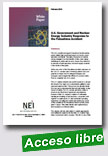 |
White Paper - U.S. Government and Nuclear Energy Industry Response to the Fukushima Accident
Nuclear Energy Institute (NEI), November 2012, 11 p.
This NEI white paper describes the U.S. Government and Nuclear Energy Industry Response to the Fukushima Accident. |
Extraído de:
http://www.nei.org/resourcesandstats/documentlibrary/newplants/
whitepaper/white-paper---the-impact-of-the-fukushima-accident-on-
the-us-nuclear-energy-industry
|
 |
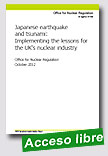 |
Japanese earthquake and tsunami: Implementing the lessons for the UK's nuclear industry
Office for Nuclear Regulation (UK), October 2012, 384 p.
On the 14 March 2011 the Secretary of State (SoS) for Energy and Climate Change requested that HM Chief Inspector of Nuclear Installations examine the circumstances of the Fukushima accident to see what lessons could be learnt to enhance the safety of the UK nuclear industry. The aim of that report was to identify any implications for the UK nuclear industry, and in doing so, to cooperate and coordinate with international colleagues. The SoS requested that an Interim |
Report be produced by the middle of May 2011, with a Final Report six months later. These were achieved with the Interim Report focusing on lessons for the UK nuclear power plants. The Final Report was published in September 2011 and contained a commitment from the Chief Inspector to produce a further report which would provide an update on progress in implementing the lessons for the UK’s nuclear industry. This report fulfils that commitment.
ONR’s ‘final’ report made a number of recommendations relating to various stakeholders, including a request that the stakeholders provide us with an update on their progress in implementing the recommendations relevant to them. All stakeholders have responded positively, and we have received those updates.
Extraído de:
http://www.hse.gov.uk/nuclear/fukushima/implementation-report-oct-2012.pdf
|
 |
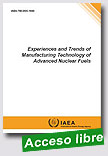
|
Experiences and Trends of Manufacturing Technology of Advanced Nuclear Fuels
IAEA TECDOC, 2012, 113 p.
The IAEA has been fostering information exchange and collaborative R&D among Member States for the development, manufacture and performance evaluation of nuclear fuels for both nuclear power and research reactors, and has published a number of technical reports on nuclear fuels. The purpose of this report is to summarize the current status of nuclear fuel manufacturing technology worldwide for both power reactors and research reactors, and to highlight the trends that are emerging for advanced fuels.
|
Extraído de: http://www-pub.iaea.org/MTCD/Publications/PDF/TE_1686_web.pdf
|
 |
 |
Review of Sealed Source Designs and Manufacturing Techniques Affecting Disused Source Management
IAEA TECDOC, 2012, 48 p.
The objective of this report is to review and discuss important design considerations from a radioactive waste management perspective. It aims to provide organizations and individuals involved with SRS, from manufacturing to the management of disused SRS, with sufficient information about the different source designs and manufacturing techniques, and to examine how the different sealed source designs affect the safe management of DSRS. This report will also help radioactive waste management operators to understand the special features that can affect the safe management of DSRS. |
Extraído de:
http://www-pub.iaea.org/MTCD/Publications/PDF/TE_1690_web.pdf
|
 |
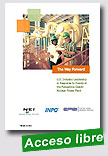 |
The Way Forward - U.S. Industry Leadership in Response to Events at the Fukushima Daiichi Nuclear Power Plant
Nuclear Energy Institute (NEI), February 2012, 9 p.
The earthquake and tsunami in Japan on March 11, 2011 and subsequent nuclear accident at Tokyo Electric Power Co.’s Fukushima Daiichi nuclear power plant have resulted in worldwide attention toward nuclear energy safety. The leadership of the U.S. commercial nuclear industry is dedicated to gaining a deep understanding of the events at Fukushima Daiichi and to taking the necessary actions to improve safety and |
emergency preparedness at America’s nuclear energy facilities.
The Electric Power Research Institute (EPRI), Institute of Nuclear Power Operations (INPO), and Nuclear Energy Institute (NEI), in conjunction with senior utility executives, have created a joint leadership model to integrate and coordinate the U.S. nuclear industry's response to events at the Fukushima Daiichi nuclear energy facility. This will ensure that lessons learned are identified and well understood, and that response actions are effectively coordinated and implemented throughout the industry. This must be accomplished while electric companies continue to ensure that the safe and reliable operation of commercial reactors is our highest priority. This effort will not diminish the independent roles of the industry support groups, such as the role of INPO to promote the highest levels of safety in U.S. commercial reactors, as actions are taken to fulfill their missions.
An important and integral aspect of the industry's response is the awareness and involvement of the industry’s many stakeholders, including industry vendors, architect-engineering companies, industry owners’ groups and national consensus nuclear standards organizations. This will ensure that the interests of each stakeholder group are considered, understood and communicated to the public and policymakers.
A comprehensive investigation of the events at Fukushima Daiichi will take considerable time. Yet, there is also a need to act in a deliberate and decisive manner. Recognizing this, America’s nuclear energy industry is taking action based on a preliminary understanding of the events. The industry’s response is structured to ensure that emergency response strategies are updated based on new information and insights learned during subsequent event reviews.
Separately, the U.S. Nuclear Regulatory Commission (NRC) is conducting an independent assessment and will consider actions to ensure that its regulations reflect lessons learned from the Fukushima events. The industry’s response will ensure that the NRC and industry remain informed of each other’s respective activities so that any new regulatory requirements are implemented in the most efficient and effective manner.
This strategic overview describes how the industry will approach this challenge and is intended to serve as a reference point for the future. It articulates strategic goals and key stakeholders for the industry’s integrated response. In addition, this overview describes the respective roles and coordination of industry organizations in managing the discrete elements of a comprehensive U.S. industry response plan.
Extraído de: http://www.nei.org/filefolder/Way_Forward_2_23_12.pdf
|
 |
|
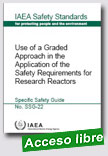
|
Use of a Graded Approach in the Application of the Safety Requirements for Research Reactors
IAEA Safety Standards Series, 2012, 74 p.
This publication provides recommendations on the appropriate manner to comply with the Safety Requirements for research reactors, IAEA Safety Standards Series No. NS-R-4, utilizing a graded approach. It is intended for use by operating organizations, regulatory bodies and other organizations involved in the design, construction and operation of research reactors. Contents: 1. Introduction; 2. Basic elements of the a
|
pproach to grading; 3. Regulatory supervision; 4. Management and verification of safety; 5. Site evaluation; 6. Design; 7. Operation; 8. Decommissioning; Annex: Example of steps in the graded approach for packaging of radioactive material.
Extraído de: http://www-pub.iaea.org/books/IAEABooks/8765/Use-of-a-Graded-Approach-in-the-Application-of-the-Safety-Requirements-for-Research-Reactors
|
 |
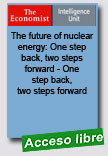 |
The future of nuclear energy: One step back, two steps forward - One step back, two steps forward
Economist Intelligence Unit, June 2011, 17 p.
Once on the cusp of a renaissance, the nuclear industry now risks being sent back to the dark ages. This is the impression that emerges from much of the commentary in the months since the crisis at the Fukushima Daiichi nuclear power plant in Japan. But is this doom and gloom misplaced?
The Economist Intelligence Unit has produced a special report on the future of the nuclear industry, updating its outlook for the top nuclear countries and a handful of atomic hopefuls. The
|
report examines the impact on countries from the nuclear disaster at Japan's Fukushima Daiichi plant following the March 11th earthquake, putting this in the context of broader developments. Available for free download, it provides our forecasts to 2020 for the ten most important countries by nuclear capacity, plus other key players.
Extraído de: https://www.eiu.com/public/topical_report.aspx?campaignid=nuclear |
 |
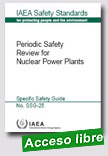 |
Periodic Safety Review for Nuclear Power Plants
IAEA Safety Standards Series, 2013, 106 p.
This Safety Guide provides recommendations and guidance on conducting periodic safety review (PSR) of an existing nuclear power plant. PSR is a comprehensive safety review of all important aspects of safety, carried out at regular intervals, typically every ten years. In addition, PSR may be used in support of the decision making process for licence renewal or long term operation, or for restart of a nuclear power plant following a
|
prolonged shutdown. The review process described in this Safety Guide is valid for nuclear power plants of any age and may have a wider applicability, for example to research reactors and radioactive waste management facilities, by means of a graded approach. Although PSR may not be an appropriate means for identifying safety issues in the decommissioning phase, the documentation resulting from PSR of an operating nuclear power plant will be an important input when planning decommissioning.
Extraído de: http://www-pub.iaea.org/books/IAEABooks/8911/Periodic-Safety-Review-for-Nuclear-Power-Plants
|
|
